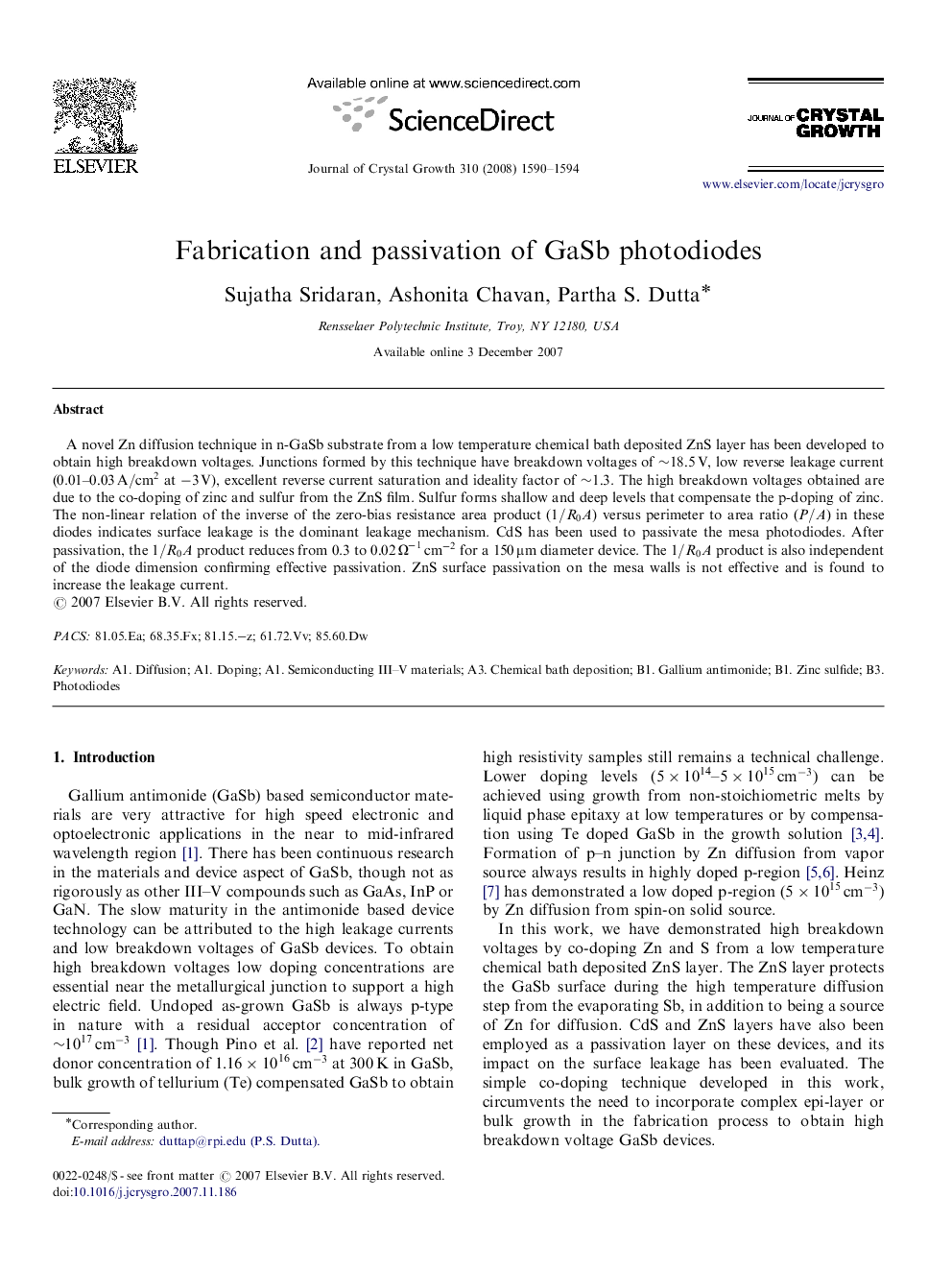| Article ID | Journal | Published Year | Pages | File Type |
|---|---|---|---|---|
| 1795549 | Journal of Crystal Growth | 2008 | 5 Pages |
A novel Zn diffusion technique in n-GaSb substrate from a low temperature chemical bath deposited ZnS layer has been developed to obtain high breakdown voltages. Junctions formed by this technique have breakdown voltages of ∼18.5V, low reverse leakage current (0.01–0.03A/cm2 at -3V), excellent reverse current saturation and ideality factor of ∼1.3∼1.3. The high breakdown voltages obtained are due to the co-doping of zinc and sulfur from the ZnS film. Sulfur forms shallow and deep levels that compensate the p-doping of zinc. The non-linear relation of the inverse of the zero-bias resistance area product (1/R0A1/R0A) versus perimeter to area ratio (P/A)(P/A) in these diodes indicates surface leakage is the dominant leakage mechanism. CdS has been used to passivate the mesa photodiodes. After passivation, the 1/R0A1/R0A product reduces from 0.3 to 0.02Ω-1cm-2 for a 150μm diameter device. The 1/R0A1/R0A product is also independent of the diode dimension confirming effective passivation. ZnS surface passivation on the mesa walls is not effective and is found to increase the leakage current.
